Venture into the Dungeon (Of Design)
I can't believe it's real. Adventures in the Forgotten Realms is really coming out. You're all seeing the cards, and soon you'll be playing with them! Like any good adventure, my first main expansion set design lead was more than I'd bargained for. There were a lot of factors: figuring out what people wanted out of a D&D set, how to fit that into competitive play environments, and how to capture the essence of everything on the cards. But the most important hurdle was evoking the feeling of D&D. People resonate with lots of different parts: the camaraderie, the heroism, the silliness, but one thing we knew we needed to nail was the sense of adventure.
We tried a lot of different approaches to progressing through stories and spaces, going into the unknown, and choosing your own adventures. We quickly determined that our solution ought to be a dungeon. It's right there in the name! And besides, it's the most iconic and resonant expression of the idea.
That left us with one answer and a lot more questions. What is a dungeon? Some sort of land? Multiple pieces you stick together? A whole second deck? And how do you explore it? What's inside? Do the other players explore along with you? Is it always the same?
Ultimately, a lot of explorations were either too mundane to get that sense of adventure or a full minigame that was too much to keep track of alongside the Magic game (or fit on the table). As we narrowed in on the sweet spot, we arrived at something much like a dungeon in its final form.
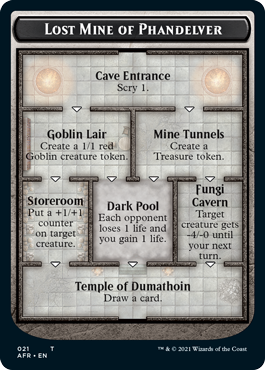
One. Now we ran up against reality: there's only so much text we can jam onto a Magic card before it becomes unreadable, and Magic's printed in a lot of languages with even tougher limits than English. We couldn't fit everything we wanted on a single card and trimmed down what we could. It was cool; it was fun; we were done, right?
Not quite. It turns out, people play a lot of Magic. And as we played more, it became obvious that our one small dungeon didn't have enough variety from one game to the next to support people jamming in hundreds and hundreds of games, and the sense of exploration would diminish even faster. So, Aaron Forsythe asked, "What if we had more than one?"


Picking between just two felt strange, and once we got to three it was clear things were plenty complex and that we didn't need a fourth. In fact, we needed help. How would people figure out which dungeon to use and venture through while drafting, or deck building, or mid-game?
It was time to take a note out of our other playbook. And it's time now to show you today's first preview card.
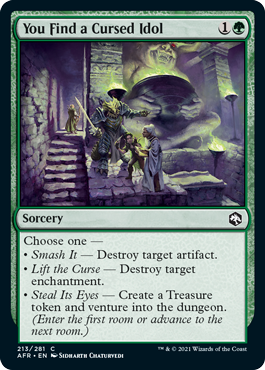
One of our other early explorations capturing this feel was choosing your own adventure with named modes on instants and sorceries. The flavor started out just being fun to read, but it also made it easier to comprehend the different portions of the card. Exactly the thing our dungeons needed! So, we picked different gameplay lanes for the three and different iconic dungeons from D&D that evoked those feelings and meshed the two together:
A baseline dungeon, providing simple, clean value? The Lost Mine of Phandelver, which players explore in D&D's introductory box adventure.
A risky, dangerous dungeon that promises great power? The Tomb of Annihilation, renowned for its deadliness.
An extra-long dungeon, for those who are in to venture for the long haul? Undermountain, as vast as they come.
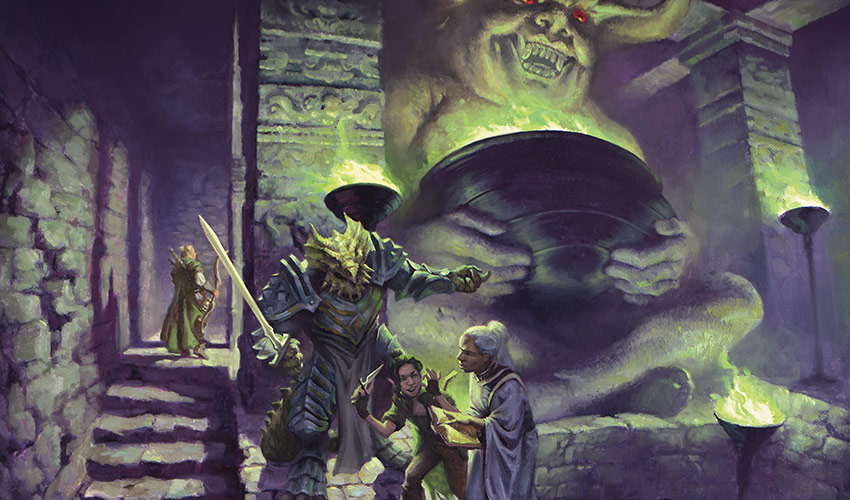
Through a few more iterations we got the mechanics to match the flavor, and then it was time to open a whole other can of purple worms: Constructed. We couldn't rely on players packing decks full of tons of different venture cards. For one thing, the mechanic has a ton of different options, and getting players to venture three or four times every turn would not only melt their brains but also take away the feeling of progress that's so much fun in going slowly. For another, the decks would stay a lot more fun to play as new sets come out with room to incorporate other cards.
All that meant we needed to find ways for just a few venture cards to enable you to complete a dungeon and open the floor for players to mix and match how they go about it. Maybe you want to brashly rush ahead and clobber whoever stands in your way. Maybe you want to methodically work your way through every corner. Or maybe you want to go Rogue, sneak in alone, and grab what you can. If that's your speed, then I've got another preview card for you:
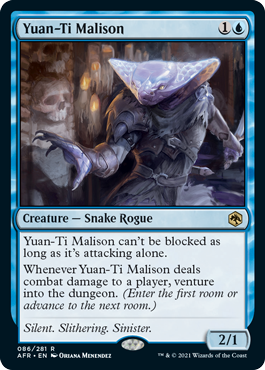
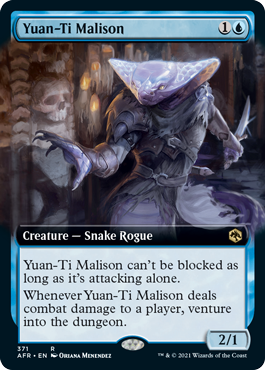
Where will you go and who else will join your venturing party? I can't wait to find out!
